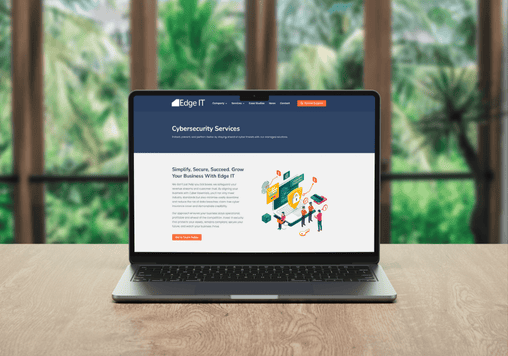Working with computers for most of your day can be pretty straining on the eyes. Those who stare at their screens for an extended period of time can develop a temporary condition known as computer vision syndrome. People who are affected by computer vision syndrome can experience eye strain, dry eyes, vertigo, double vision, and headaches.
Computer vision syndrome is fairly common, but it can be avoided. Here are a few ways in which you can cut down on some of the eye strain:
1. Use Proper Lighting
Improper lighting is one of the main causes of eye strain. Excessively bright light – either from a window or from interior lighting – should be avoided. As a good rule of thumb, the ambient lighting in your computer workspace should be about half as bright as that of the rest of the office.
You can cut down on some of the unnecessary light by having drapes or blinds on your windows and by using lower intensity light bulbs. If possible, try to position your screen to the side of the windows, rather than directly in front of or behind them.
2. Follow the 20-20-20 Rule
Exercising your eyes is a great way to avoid straining them. Constantly focusing on your screen risks tiring out your eyes. This fatigue could cause your eyes’ focusing ability to “lock up” after using a computer for an extended period of time.
The 20-20-20 rule lets you lower this risk. This rule prescribes looking away from your computer every 20 minutes, and instead looking for 20 seconds at an object 20 feet away from you.
Another good eye exercise involves looking at a distant object for 10-15 seconds and then looking at a close object for 10-15 seconds. Repeat this process 10 times to reduce fatigue on your eyes.
Remembering to rest your eyes throughout the day can be difficult. Fortunately, there are a few apps that you can use to schedule reminders for yourself.
3. Use the Right Equipment
If you are one of the last people still using a cathode ray tube (CRT) monitor, you should strongly consider upgrading to a flat-panel liquid crystal display (LCD) monitor. CRT screens can sometimes flicker, which is a significant cause of eye strain. Even in cases where this flickering is imperceptible, it can still cause problems for your eyes.
In addition to being better for your eyes, LCDs last longer and are not as bulky as CRTs. Many LCD screens come with anti-reflective surfaces, which are helpful for reducing eye strain. A larger screen size will also help your eyes. When choosing a new LCD screen, make sure to get the one that offers the highest resolution. This will give you the sharpest picture and prevent blurred vision.
4. Adjust Your Settings
You should adjust your brightness so that it matches with the lighting of your workspace. To do this, load a web page that is all or mostly white. If the screen seems dull, then the brightness may be too low. If it looks like a light source, then the brightness is set too high. There are apps that will automatically adjust your screen’s brightness throughout the day.
You should adjust the color temperature of your screen. This term refers to the spectrum of visible light emitted by the display. Blue light is more of a problem then red or orange light because of its shorter wavelength. Reducing your display’s color temperature reduces the amount of blue light emitted, and thereby reducing the chances of eye fatigue.
Text size and contrast are two more issues to consider when making your adjustments. In Windows, the display settings are under the Control Panel. Apple users, on the other hand, can find their display settings in the System Preferences folder.
5. Take Frequent Breaks
According to a study by the National Institute for Occupational Safety and Health, taking more “mini-breaks” during the day can reduce the risk of eye problems, as well as the chances of suffering neck, back, or shoulder pain. In the study, workers had four five-minute breaks throughout the day in addition to their normal breaks. The added breaks improved the workers’ health, and their productivity remained the same.
Blinking more can also help. People working at computers have been found to blink significantly less than they normally would. Consciously blinking more frequently helps keep your eyes from drying out and becoming irritated.
Conclusion
Through the use of the right tools and techniques, you can avoid the eye strain involved in staring at a computer all day. These recommendations can help to keep both you and your employees healthy.
Edge IT Can Help
Edge IT Can Help
Technology should empower your business, not hold it back. We provide proactive IT support, robust cybersecurity, and seamless solutions to keep your organisation secure and running smoothly. Get in touch today and let’s strengthen your IT for a smarter, safer future.
Edge IT Can Help
Technology should empower your business, not hold it back. We provide proactive IT support, robust cybersecurity, and seamless solutions to keep your organisation secure and running smoothly.
Get in touch today and let’s strengthen your IT for a smarter, safer future.


